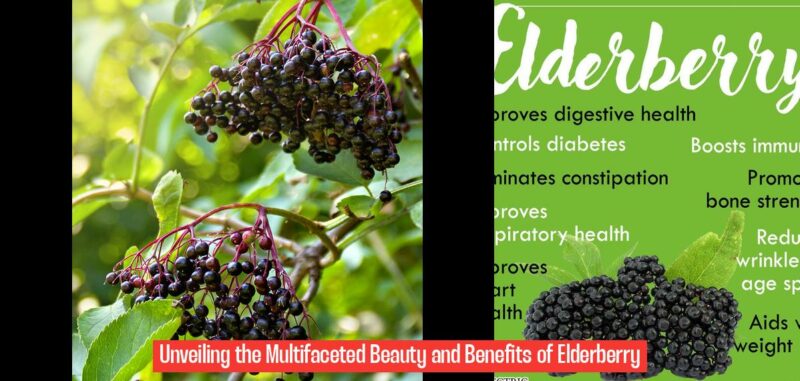The Elderberry: A Multifaceted Native Shrub

The elderberry, a native shrub boasting a vibrant history and a wealth of benefits, offers a captivating blend of beauty, practicality, and ecological significance. This hardy shrub, scientifically known as Sambucus cerulean or Sambucus Mexicana, is a staple of the West Coast landscape, flourishing from sea level to the towering heights of 10,000 feet. Its resilience allows it to thrive in diverse settings, from the arid deserts to the lush temperate rainforests. With its showy blooms and juicy berries, the elderberry is a welcome addition to any garden, attracting myriad native creatures and enriching the biodiversity of the surrounding ecosystem.
A Symphony of Nature’s Beauty and Utility
The elderberry’s appeal lies in its versatility. It’s a drought-tolerant plant that can flourish in both full sun and shade, making it an adaptable choice for various garden settings. Its sprawling growth habit creates a captivating spectacle during its flowering and fruiting seasons. A profusion of delicate, cream-colored flowers, resembling clusters of tiny blossoms, adorn the elderberry in late spring, filling the air with their sweet fragrance. These flowers are a beacon for pollinators, attracting a diverse array of bees, butterflies, and moths, contributing to the crucial process of pollination.
Trending — Sneak Peek at Marvel’s Upcoming Series ‘Agatha All Along’: Meet the Cast, Release Date, and More
As summer progresses, the elderberry transforms once more, showcasing clusters of deep purple berries, their waxy coating adding a bluish hue. These berries are a vital food source for native birds, providing them with essential sustenance during the fall and winter months. The birds, in turn, play a crucial role in the elderberry’s propagation, dispersing its seeds throughout the landscape, ensuring the continuation of this valuable species. Beyond its aesthetic appeal and ecological importance, the elderberry holds a special place in human history, its various parts having been utilized for centuries for medicinal, culinary, and even musical purposes.
How to Unlock the Viper and Pictomancer Jobs in Final Fantasy XIV: Dawntrail – A Comprehensive Guide
A Legacy of Human Connection
The elderberry’s name itself reflects its long-standing relationship with humankind. Derived from the Anglo-Saxon words “auld” or “ellarn,” meaning fire or kindle, it underscores the plant’s traditional use as a fuel source. The elderberry’s hollow branches, easily ignited, were used to create fire, a vital component of human survival and progress. This same hollow property made the elderberry branches ideal for crafting musical instruments, particularly the “Sambuke,” which gave rise to the plant’s scientific genus name, “Sambucus.”
The elderberry’s cultural significance extends beyond its practical uses. It has woven its way into the fabric of human mythology and folklore. In Greek mythology, the titan Prometheus, known for his gift of fire to humanity, is depicted as carrying fire in a hollow elderberry branch, solidifying the plant’s association with the element of fire and its transformative power. In modern times, the elderberry continues to captivate imaginations, appearing in J.K. Rowling’s beloved Harry Potter series, where the elder wand, crafted from elderberry wood, plays a pivotal role in the epic battle between good and evil.
The Elderberry’s Thriving Presence in Butte County
In Butte County, California, the elderberry thrives in streamside locations, forming dense thickets along waterways like Big and Little Chico Creeks and the Lindo Channel. Their presence is a testament to their adaptability and ability to tolerate a range of environmental conditions. Even in areas scarred by wildfires, the elderberry demonstrates remarkable resilience, re-emerging with vigor, a symbol of nature’s tenacious spirit.
A Vital Habitat for a Threatened Species
The elderberry plays a crucial role in the survival of the valley elderberry longhorn beetle (Desmocerus californicus dimorphus), a federally threatened species. This beetle relies solely on the elderberry as its host plant, its life cycle intricately tied to the shrub’s existence. The adult beetles feed on the elderberry’s leaves and flowers, while the larvae burrow into the pithy interior of the elderberry stems, where they spend a portion of their life cycle. The elderberry’s protection is therefore essential for the beetle’s survival, as the loss of this vital habitat could lead to the species’ decline.
Nurturing the Elderberry in Your Garden
The elderberry, with its diverse benefits and captivating history, offers a compelling reason to consider incorporating it into your garden. It’s a hardy plant, requiring minimal care and providing a rich reward in the form of beauty, wildlife habitat, and even potential medicinal uses. However, it’s important to remember that the elderberry is a large shrub, reaching up to 30 feet in height. Therefore, it’s best to choose a location in your garden that allows it to thrive without obstruction. With its long lifespan, the elderberry will grace your landscape for generations to come, becoming a cherished part of your garden’s story.
What are some key characteristics of the elderberry shrub?
The elderberry is a native shrub known for its vibrant history, resilience, and ecological significance. It thrives in diverse environments, from arid deserts to temperate rainforests, and attracts native creatures with its showy blooms and juicy berries.
How does the elderberry contribute to biodiversity?
The elderberry attracts a variety of pollinators with its delicate, cream-colored flowers in late spring, such as bees, butterflies, and moths. Its deep purple berries serve as a vital food source for native birds during fall and winter, aiding in seed dispersal and ensuring the species’ continuation.
What makes the elderberry a versatile plant for gardens?
The elderberry is drought-tolerant and can thrive in both full sun and shade, making it adaptable to various garden settings. Its sprawling growth habit creates a captivating spectacle during flowering and fruiting seasons, adding beauty and utility to the landscape.
What is the historical significance of the elderberry to human culture?
The elderberry has been utilized for centuries for medicinal, culinary, and even musical purposes. Its name, derived from Anglo-Saxon words meaning fire or kindle, reflects its traditional use as a fuel source, highlighting its enduring connection with humankind.



